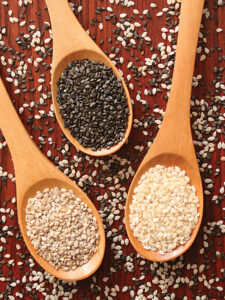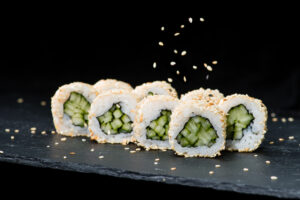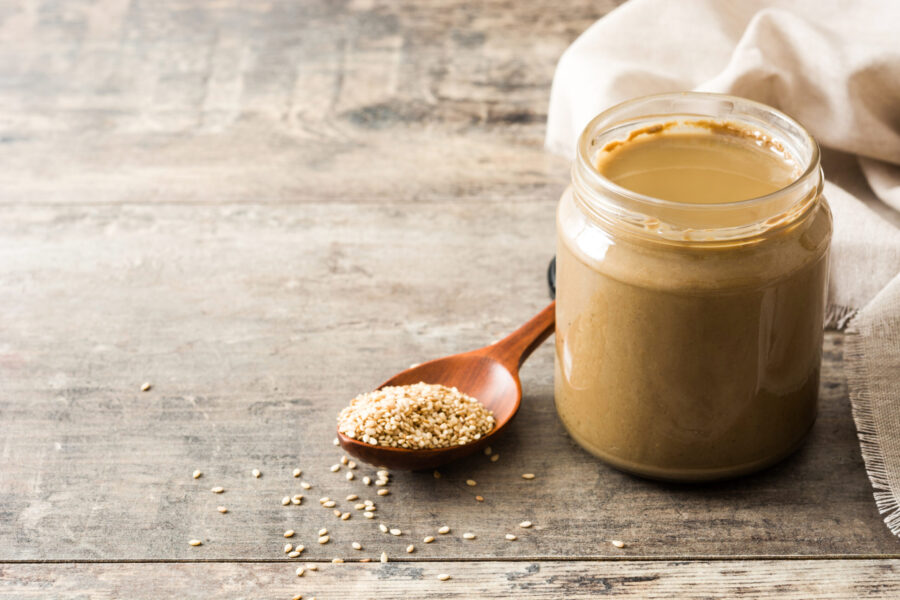Ounce for ounce, perhaps no spice, herb, or seed is as versatile and transformative as the sesame seed.
Name a food: Aside from, say, ice cream or pickles, there’s nary a one whose flavor or texture can’t be enhanced by the addition of a little sesame seed. And that’s been true since ancient times; sesame seeds are certainly one of the oldest condiments, and they’ve become an integral ingredient in cuisines around the world.
Their versatility is amazing. Sesame seeds can be processed into healthful, polyunsaturated, aromatic sesame oil for cooking, and especially for stir-frying rice and vegetables. They can be made into tahini, a smooth, creamy paste of toasted, ground, hulled sesame seeds that’s a staple of Middle-Eastern cooking, which is in turn an ingredient of the familiar, tangy, and delicious appetizers hummus and baba ghanoush.

Sesame seeds are ivory, brown, or black; ivory seeds are generally sprinkled on breads and crackers prior to baking, brown seeds boast the more typically nutty flavor, and black seeds, being more expensive, are regarded as the gourmet seed and therefore are best used as a dramatic garnish. But all varieties have the same distinctively sweet, nutlike taste and pleasantly crunchy texture, and most people are hard pressed to distinguish any difference in taste among the three.
Sesame seeds are an indispensable addition to a variety of spring salads, and are exquisitely tasty sprinkled over cucumber or asparagus. In fact, you can sprinkle them, toasted or untoasted, over an abundance of dishes, including vegetables, rice, noodles, eggplant, stir fries, fruit and nut desserts, cookies, and all kinds of bread dough before baking. While you can store sesame oil in the pantry, you should store sesame seeds in the refrigerator to prevent them from becoming rancid.

Toasting sesame seeds is pretty easy. Simply preheat the oven to 350 degrees, put sesame seeds into a shallow ungreased pan, and toast them for 10 to 15 minutes, stirring them a couple of times. Or you can accomplish the same nutty flavor from roasting in a cast-iron skillet over a medium heat for the same time.—By Kat Schneider
